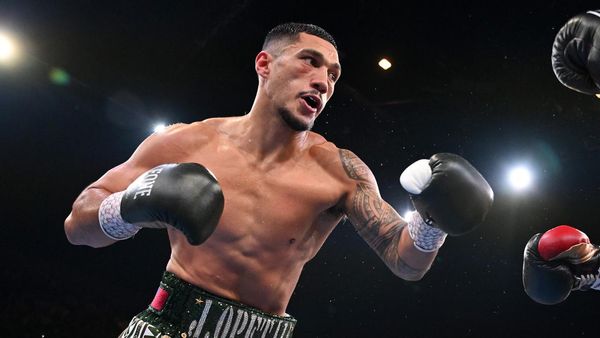
At the heart of the Walt Disney headquarters in Burbank, California, there is an illuminated cabinet holding some of Walt’s favorite foods: V8 vegetable juice; Jell-O; Spam.
Disney was, by the end of his life, one of the most famous people in America, head of a company that made $100m a year, an iconic figure of the 20th century.
But his tastes remained simple. One of his preferred meals was a bowl of canned chili, created by mixing together two brands – Gebhart’s and Dennison’s, one meatier, one beanier – to achieve what he considered the ideal meat-bean ratio.
“He liked basic foods,” his wife, Lillian, once explained. “He loved chili.”
Nearly 57 years after his death in 1966, Walt Disney the man still looms in an uncanny way over the company that bears his name. A century on, most people don’t remember who built the Hollywood sign, or the names of any of the Warner brothers. But Disney remains the standard of a quintessentially American creativity, a man whose imagination fused perfectly with commerce, and whose lovable cartoon characters became synonymous with US cultural domination.
Inside the Disney studio lot in Burbank, Walt is everything, his smallest habits a potential clue to his world-altering imagination.

The first stop on a studio tour offered to the Guardian ahead of Disney’s 100th birthday on 16 October was Walt’s old offices, on the third floor of the animation building, which have been painstakingly reconstructed according to photographs of the rooms taken after his death. “The books – if they were upside down in the picture, they were put back upside down. If it was backwards, it was put back backwards,” Laura Sanchez, one of my tour guides, explained.
The rooms are decorated in tasteful mid-century style, with low white couches and art objects from around the world. There are sketches by his close personal friend, Norman Rockwell, of Disney’s daughters, and a concealed sound system (record player plus speakers) that was state-of-the-art for the day. There is a giant annotated map of the developing attractions at Disneyland, opened in 1955, and a photograph of the animatronic Abraham Lincoln, capable of reciting fragments of the president’s speeches, that Disney made as a tribute to one his favorite historical figures. Inside the hi-tech ’60s kitchenette, with its sliding doors and illuminated shelves, were cans of Gebhardt’s and V8 juice to display to visitors.
One of the offices has a grand piano. On Fridays, when the work week was done, Disney would often summon the Sherman brothers, the musical duo who wrote It’s a Small World After All, to have them play him one of his favorite songs: Feed the Birds, from Mary Poppins.
“It’s all about showing kindness to others, showing care,” Sanchez said. “For the CEO of the company to know that’s the importance of the song and to love it so much, that really shows me how Walt was.”


Disney, who cultivated a wholesome, genial public persona on television as America’s “Uncle Walt”, was not an easy boss, Sanchez conceded. He was “stern” and “didn’t give a lot of praise”, she said. “The animators would say that when he would say, ‘Yeah that’ll work,’ that filled them with joy and happiness, because that was his approval.”
In one of the outer rooms of Disney’s offices, Sanchez pointed out an old photograph that showed how the entire Disney lot had been constructed at a strange diagonal to the city blocks around it. That wasn’t an accident, she said. “The perfect light for animators to work in is northern light,” she said. As a result, Disney had built his animation building on “a perfect north-south axis”.
Between the meticulously constructed animation building, and the precise mixture of the two brands of chili, there was a theme developing: the maniacal obsession that Disney could bring to even the smallest details of his life. Neal Gabler, author of one of the more critical Disney biographies, argued that choosing animation as his art form was an expression of Disney’s quest for “absolute control” because “the animator created his own world – an alternative reality of his imagination in which the laws of physics or logic could be suspended”.

There’s no denying that the kind of obsessive control that Disney cultivated can be intensely pleasurable. When I drove into the Disney parking lot and saw that each spike of the studio fence was topped with a little rounded Mickey Mouse head, I felt a surge of childlike glee. I was not the only one affected: early in the studio tour arranged for a pack of European foreign correspondents, one of the other reporters started singing “Heigh ho, heigh ho, it’s off to work we go!”. “We are the seven dwarves,” another one quipped, as we trailed behind another tour guide through the perfect California sunshine.
The Burbank studio lot is covered with tributes to Snow White, Disney’s first feature-length animated film. Before it debuted in 1937, Hollywood insiders had referred to the $1.5m project as “Disney’s folly”, arguing that audiences wouldn’t sit through an hour-long cartoon, our guide Julia Dimayuga told us. Instead, the film was a triumph, bringing in $8m that the company used to build itself a huge new studio.
As we paused by a street sign reading “Dopey Drive” to hear this story, Dimayuga pointed to a cute squirrel scampering by, and I was surprised it didn’t stop to sing a duet with her. Disney employees can be unnervingly peppy and sincere, as if the company staffs itself entirely with Disney princesses and sidekicks poorly disguised in blazers.
But the relentless Disney optimism can also be exhausting. The Walt Disney Company is embattled on many fronts, from its labor dispute with striking Hollywood actors, to anti-LGBTQ+ attacks from the Florida governor, Ron DeSantis, to environmental questions about the “Disney living community” built around a giant faux lagoon that the company is planning to construct in the California desert.
None of this was discussed during the “Disney 100” studio tour, which lasted a gruelling eight hours, with a break in the middle for lunch served on china decorated with tiny illustrations of Mickey. The company seems more eager to talk about its past than its future. We saw selections from Disney’s vast historical archive, which contains 25m photographs and illustrations, and heard about the centennial exhibition of costumes and props currently touring the globe, opening this month in London after stints in Philadelphia and Munich. (The exhibition is so uncritical that “it starts to feel like Walt-washing”, one of our correspondents noted.)
Even though he’s been dead for half a century, it’s clear Disney’s personal control over the company hasn’t ended. Midway through the tour, I sat down for an interview with Bret Iwan, the actor who currently voices Mickey Mouse. I had seen online that Iwan had chosen to get married on 13 July 2021, giving him the same anniversary date as Walt and Lillian Disney. This was a comparatively small Disney tribute: Iwan’s predecessor as the voice of Mickey Mouse, the actor Wayne Allwine, was married for nearly 30 years to Russi Taylor, the voice actor who played Minnie Mouse.


Before he auditioned to become the voice of Mickey in 2009, Iwan had been working as an illustrator for Hallmark greeting cards in Kansas City, Missouri, “much like Walt did before he came to LA”, he noted. Iwan was a longtime Disney fan – “I learned to draw by drawing Mickey” – and said it was an honor to be chosen as the fourth actor to voice Mickey Mouse since the squeaky-toned originator of the role: Walt Disney himself.
Iwan seemed nonplussed when I asked him what distinctive “flavor” he brought to the character.
“We are just filling in for Walt and trying to ensure his legacy as Mickey continues for as long as possible,” Iwan said. He kept in mind what Jimmy MacDonald, who had taken over the character from Disney in 1946, told Allwine when he passed on the role: “Remember, kid, you’re only filling in for the boss.”
All the hagiography in Burbank reminded me why people continue to believe that Disney was cryogenically frozen at his death, and that he waits, in some vault, to be revived by science.
In reality, Disney, who died of lung cancer, was cremated, his ashes interred at the Forest Lawn cemetery. But the myth that Disney remains suspended in some frozen half-life began circulating not long after his death, Gabler wrote. There is something about the vividness of Disney’s imagination, his obsession with control, that makes it comforting to believe he found a way to bend the rules of mortality. You can imagine the old-fashioned film sequence: the great cartoonist, dying, draws himself into one of his cartoons, becoming a mustached Snow White in his glass coffin, waiting for the pencil powerful enough to reanimate him.







